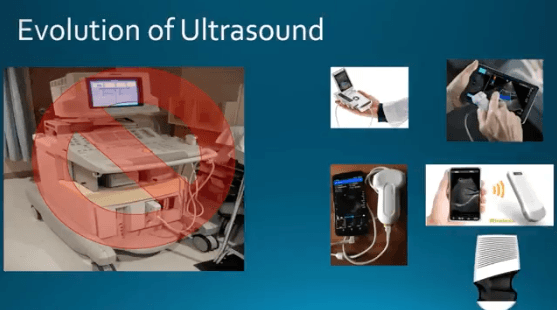National Ultrasound, Uncategorized
Implementing the PEARLS Approach and Ultrasound
As ultrasound providers, we are always eager to share information about ultrasound technology and how it can benefit offices and practices of any size. But, we do recognize that many offices have not yet learned how an ultrasound system can make a difference. In fact, there are a number of offices across America who have not yet implemented the use of the hand-held ultrasound – often because they figure that the traditional ultrasound set up is sufficient.
According to Dr. Michael Wagner (watch video for full credentials), there is a gap between what we can learn in a diagnostic exam and what is identified by a handheld ultrasound. This gap comes at significant cost, not just monetarily but in the health of patients and how much trust they have in the medical field – especially when one considers that in the US, the spending on medical procedures has gone up, but it is not resulting in better results or more accurate diagnoses.
Enter the use of the PEARLS method of ultrasound and bedside examinations. Developed by Dr. Janice Boughton, the PEARLS approach stands for the areas where the handheld ultrasound can be used to supplement the traditional physical exam, thus providing better more informed results because it allows a physician to measure rather than probe an affected area. The areas where PEARLS can be implemented are:
Parasternal
Epigastric
Apical/anterior lung
Right upper quadrant
Left upper quadrant
Suprapubic
But there are many other ways the handheld ultrasound works, in regards to the PEARLS method. Some of these include examinations of the heart, lungs, spleen, liver, kidneys, intestines, skin tissues, ENT, and peritoneum.
Benefits of the use of handheld ultrasound include:
· Change of primary diagnosis
· Verification of primary diagnosis
· Important additional diagnostic info
In offices where the hand helped ultrasound approach is used, doctors are finding that patients are responding more positively, and have a better understanding of what it going on in their body – especially when the physician allows the patient to hold the device’s screen and see the images as they appear. It should also be noted that those offices which see a larger number of elderly patients find the handheld system to be a better approach for obtaining a diagnosis. Also noteworthy, is that the PEARLS approach doesn’t take an excessive amount of time to perform, and, with practice, actually save you time in the examination.
If you are uncertain as to the value of the hand-held ultrasound and whether it will be a benefit to your practice, then it is time to become familiar with the PEARLS method – as well as take some time to view the video on POCUS and the webinar on RUSH! As you watch these videos, please feel free to jot down questions to ask one of our friendly, National Ultrasound specialists. We would love to hear from you, and help you determine what type of hand-held ultrasound will be best meet your and your patient’s needs. Give us a call today!

